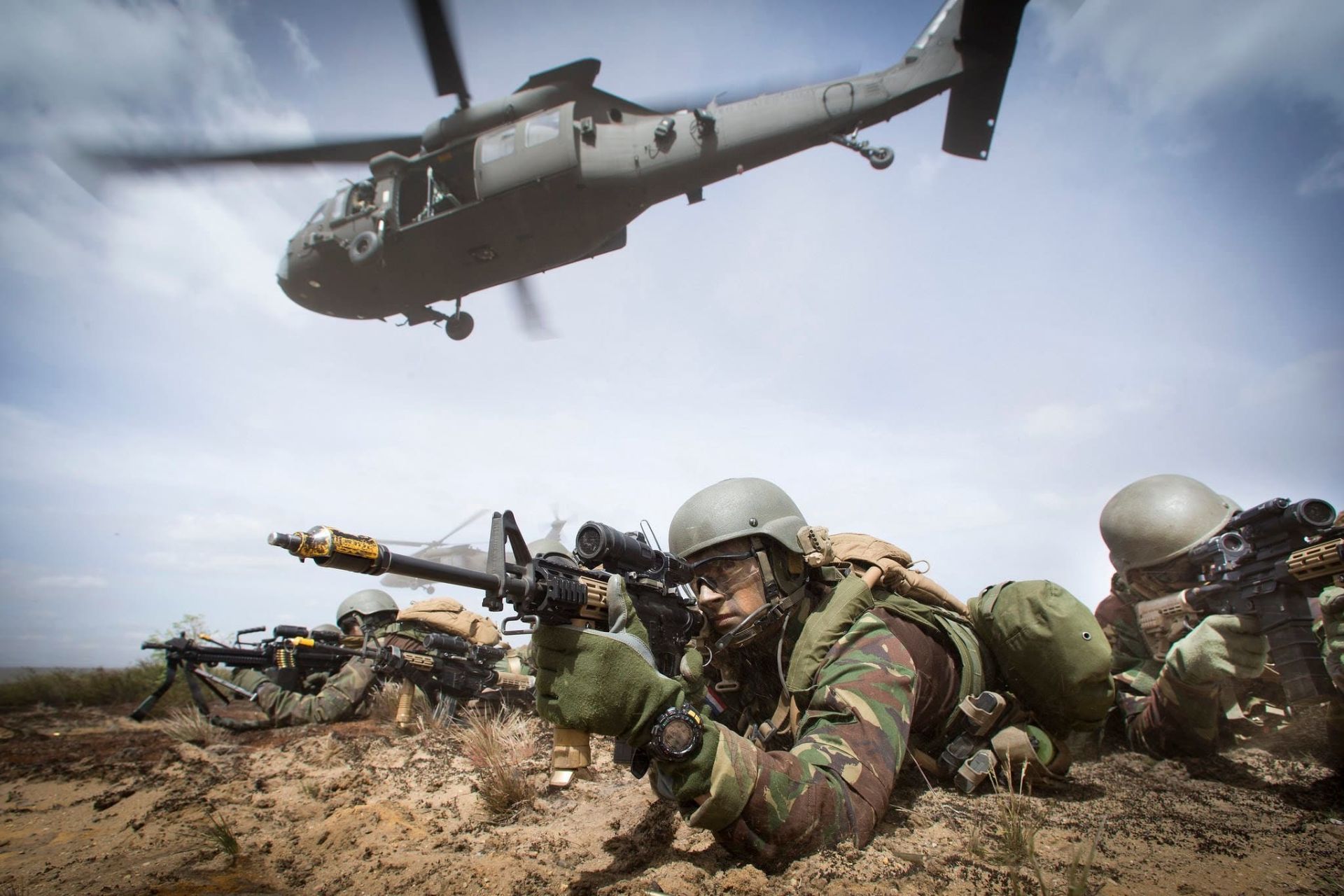NATO Strengthens Military Presence in Eastern Europe due to Russian provocations

{loadposition bannertop}
{loadposition sidebarpub}
Since Finland joined NATO in 2023, the Alliance has stepped up its military presence in Eastern Europe, a region marked by increasing instability. Recently, Eurofighter jets from the German 71 tactical squadron conducted a notable exercise near the Russian border, signifying a significant strategic but dangerous escalation.Follow Army Recognition on Google News at this link
NATO’s Very High Readiness Joint Task Force – a rapidly deployable, multinational force made up of air, land, maritime and Special Operations forces – was established at the 2014 NATO Summit in Wales, here during training in 2019 (Picture source: NATO)
According to the German newspaper Bild, three Eurofighters landed and took off from a road near the village of Hosio in Finland, located about 190 kilometers from the Russian border. This maneuver, which took place during the BAANA 2024 exercise, was potentially conducted under the watch of Russian radars, indicating a clear demonstration of NATO’s rapid deployment capability in strategic areas.
The exercise also saw the participation of two F-35 Lightning II aircraft from the US Air Force, underlining the United States’ commitment to regional security. The Finnish Air Force contributed to this effort by releasing videos showing the aircraft’s ability to operate from unconventional infrastructures like highways, a skill shared with other modern fighter jets such as the F-35, Gripen, and F/A-18.
Finland’s recent NATO membership, a decision influenced by Russia’s invasion of Ukraine in 2022, has exacerbated tensions with Moscow. Russia, accused of waging a hybrid war by orchestrating a migration crisis at the Finnish border, has also been involved in incidents of GPS signal jamming affecting both civilian and military aviation, particularly in the Baltic States.
Concurrently, NATO’s air security has been tested with recent incidents like the crash of a Russian military drone in Latvia, prompting member states to enhance their cooperation and reevaluate their collective defense strategies in response to ongoing provocations.
In addition to air deployment, NATO has also strengthened its ground presence along its eastern flank. Units from the American and European armies, including tank and mechanized infantry battalions, have been deployed in Baltic countries such as Estonia, Latvia, and Lithuania. These troop movements, accompanied by heavy military equipment, aim to enhance deterrence against any potential aggression. Ground maneuvers and joint military exercises have intensified, reflecting the Alliance’s commitment to ensure a robust and responsive defense against increased military activities in the region. This ground reinforcement, parallel to the aerial effort, underscores NATO’s overall commitment to maintaining stability and effectively responding to all forms of threats.
NATO, by bolstering its presence on the eastern border of Europe, sends a clear message of solidarity and readiness in the face of regional threats. This escalation, although provocative in the eyes of some actors, is a calculated response to actions perceived as aggressive by Russia, ensuring strategic deterrence during a period of tense international relations, undoubtedly leading to potential skirmishes on one side or the other.

{loadposition bannertop}
{loadposition sidebarpub}
Since Finland joined NATO in 2023, the Alliance has stepped up its military presence in Eastern Europe, a region marked by increasing instability. Recently, Eurofighter jets from the German 71 tactical squadron conducted a notable exercise near the Russian border, signifying a significant strategic but dangerous escalation.
Follow Army Recognition on Google News at this link
NATO’s Very High Readiness Joint Task Force – a rapidly deployable, multinational force made up of air, land, maritime and Special Operations forces – was established at the 2014 NATO Summit in Wales, here during training in 2019 (Picture source: NATO)
According to the German newspaper Bild, three Eurofighters landed and took off from a road near the village of Hosio in Finland, located about 190 kilometers from the Russian border. This maneuver, which took place during the BAANA 2024 exercise, was potentially conducted under the watch of Russian radars, indicating a clear demonstration of NATO’s rapid deployment capability in strategic areas.
The exercise also saw the participation of two F-35 Lightning II aircraft from the US Air Force, underlining the United States’ commitment to regional security. The Finnish Air Force contributed to this effort by releasing videos showing the aircraft’s ability to operate from unconventional infrastructures like highways, a skill shared with other modern fighter jets such as the F-35, Gripen, and F/A-18.
Finland’s recent NATO membership, a decision influenced by Russia’s invasion of Ukraine in 2022, has exacerbated tensions with Moscow. Russia, accused of waging a hybrid war by orchestrating a migration crisis at the Finnish border, has also been involved in incidents of GPS signal jamming affecting both civilian and military aviation, particularly in the Baltic States.
Concurrently, NATO’s air security has been tested with recent incidents like the crash of a Russian military drone in Latvia, prompting member states to enhance their cooperation and reevaluate their collective defense strategies in response to ongoing provocations.
In addition to air deployment, NATO has also strengthened its ground presence along its eastern flank. Units from the American and European armies, including tank and mechanized infantry battalions, have been deployed in Baltic countries such as Estonia, Latvia, and Lithuania. These troop movements, accompanied by heavy military equipment, aim to enhance deterrence against any potential aggression. Ground maneuvers and joint military exercises have intensified, reflecting the Alliance’s commitment to ensure a robust and responsive defense against increased military activities in the region. This ground reinforcement, parallel to the aerial effort, underscores NATO’s overall commitment to maintaining stability and effectively responding to all forms of threats.
NATO, by bolstering its presence on the eastern border of Europe, sends a clear message of solidarity and readiness in the face of regional threats. This escalation, although provocative in the eyes of some actors, is a calculated response to actions perceived as aggressive by Russia, ensuring strategic deterrence during a period of tense international relations, undoubtedly leading to potential skirmishes on one side or the other.






